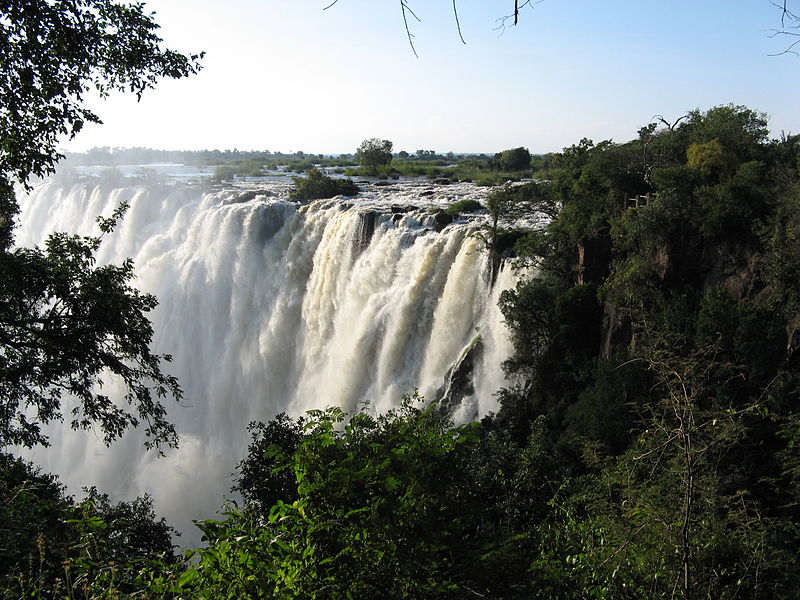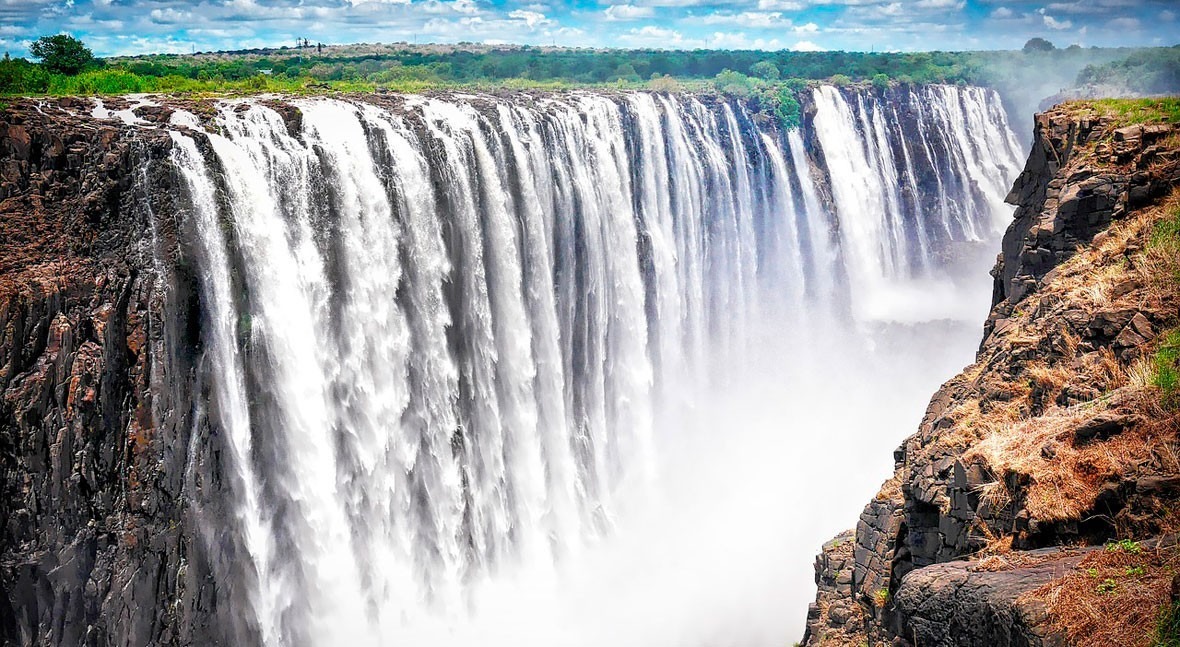Victoria Falls, the most extraordinary waterfalls in the world
Victoria Falls, in Africa, is a waterfall on the Zambezi River at the border between Zambia and Zimbabwe. Known locally as Mosi-oa-Tunya, (the smoke that thunders), Scottish explorer David Livingstone renamed them in 1855 in honour of Queen Victoria of Britain when he visited them and was fascinated by the sight.

Millions of years ago, tectonic plate movements affected the Zambezi river, the fourth largest in Africa, leading to tectonic faults about 100 metres deep. Those displacements led to the spectacular fall of the Zambezi; today, particularly during the rainy season when the river reaches its highest flow, it forms the longest waterfalls in the world.

The Victoria Falls bridge is a steel arch completed in 1905.

The waterfalls are approximately 1.7 km wide and 108 metres high, and are considered an extraordinary sight, being one of the major tourist attractions in southern Africa.


The Victoria Falls were declared a World Heritage Sight by UNESCO in 1989, and since 2010 are part of the Kavango-Zambezi Transfrontier Conservation Area.

(Images: Wikipedia and Pixabay)












